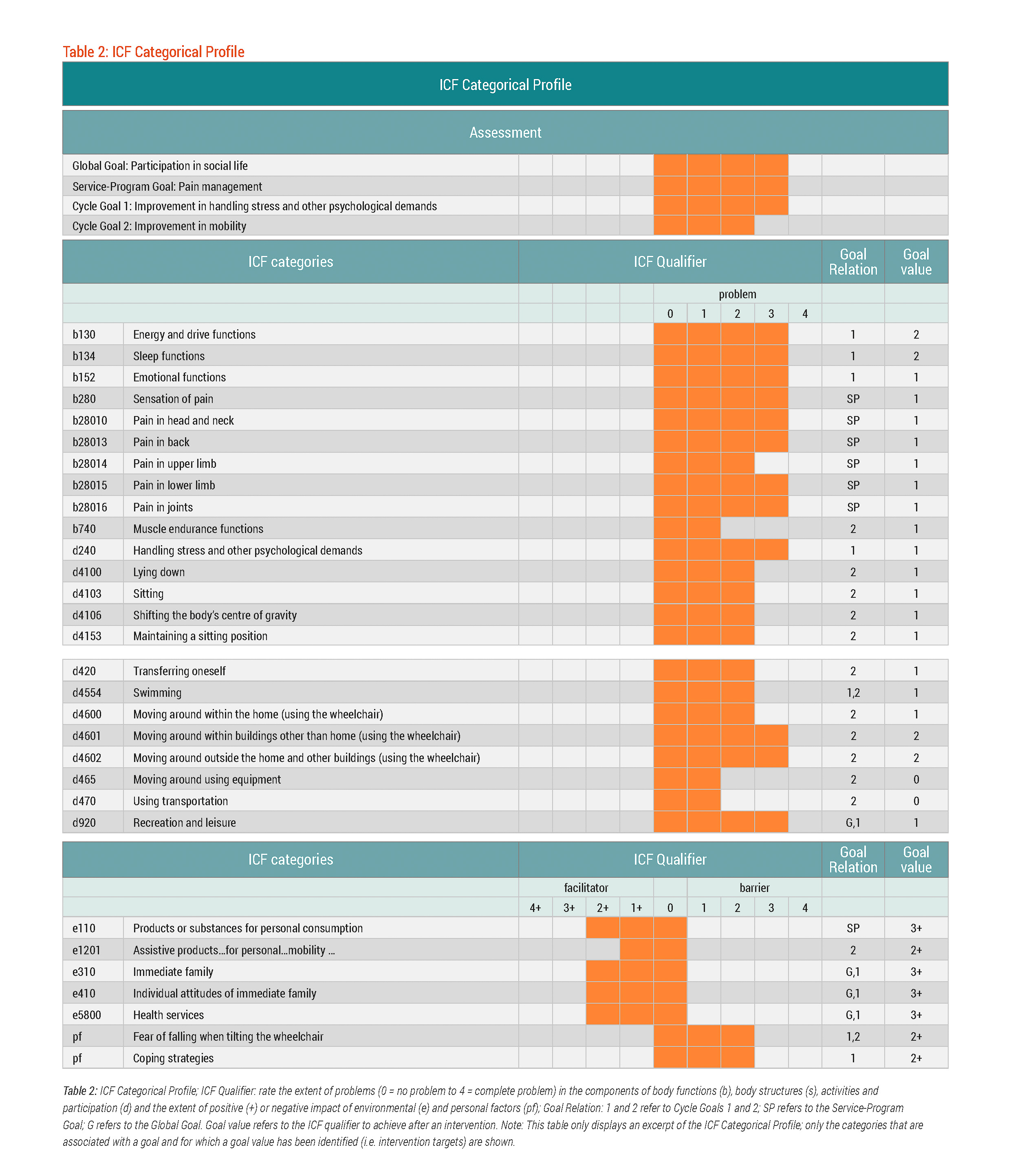Goal-setting/Determination of Intervention Targets

In consideration of the assessment results and Ida's expressed views about her needs and functioning problems, Ida and the rehabilitation team identified four goals. They identified ‘pain management’ as a service-program goal, i.e. the goal to achieve at the end of the Rehab-Cycle®. As small steps toward achieving the service-program goal, they identified ‘improvement in handling stress and other psychological demands’ and ‘improvement in mobility’ as two cycle goals. Since Ida's overarching goal was to improve her quality of life, in particular to increase her participation in social life and other major life areas, ‘participation in social life’ as a long-term global goal was also set.
These goals were documented on Ida's ICF Categorical Profile. Her ICF Categorical Profile also showed a visual depiction of the assessment results as a bar graph. The bar graph reflects the ratings given to categories of the International Classification of Functioning, Disability and Health (ICF){cs19-fn21} and personal factors that were identified during the comprehensive assessment. ICF qualifiers were used to indicate the ratings. To compare Ida's functioning at the initial assessment with her functioning at the end of the Rehab-Cycle®, ICF qualifiers were also used to indicate a goal value, i.e. the rating that was intended to be reached for relevant ICF categories at the end of the Rehab-Cycle®.
The ICF categories (and personal factors) that corresponded to any of the goals set and were associated with a goal value were considered intervention targets. Intervention targets were those categories that Ida's rehabilitation team intended to addressed with specific interventions . For example, for cycle goal 1 ‘improvement in handling stress and other psychological demands’, the following intervention targets were defined:
- b130 Energy and drive functions
- b134 Sleep functions
- b152 Emotional functions
- d240 Handling stress and psychological demands
- d4554 Swimming
- d920 Recreation and leisure
- e310 Immediate family
- e410 Individual attitudes of immediate family
- e5800 Health services
- pf Fear of falling when tilting the wheelchair
- pf Coping strategies
All of Ida's goals and intervention targets can be seen on table 2.

Table 2: ICF Categorical Profile; ICF Qualifier: rate of the extent of problems (0 = no problem to 4 = complete problem) in the components of body functions (b), body structures (s), activities and participation (d), and the extent of positive (+) or negative impact of environmental (e) and personal factors (pf); Goal relation: 1 and 2 refer to Cycle Goals 1 and 2; SP refers to the Service-Program Goal; G refers to the Global Goal; Goal value refers to the ICF qualifier to achieve after an intervention. Note: This table only displays an excerpt of the ICF Categorical Profile; only the categories that are associated with a goal and for which a goal value has been identified (i.e. intervention targets) are shown.
During the intervention phase of the Rehab-Cycle®, one or more members of Ida's multidisciplinary rehabilitation team was assigned to perform interventions that addressed each intervention target.